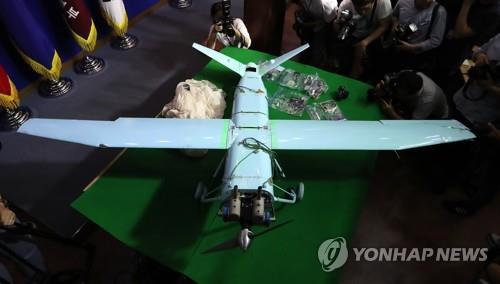- California Assembly OKs highest minimum wage in nation
- S. Korea unveils first graphic cigarette warnings
- US joins with South Korea, Japan in bid to deter North Korea
- LPGA golfer Chun In-gee finally back in action
- S. Korea won’t be top seed in final World Cup qualification round
- US men’s soccer misses 2nd straight Olympics
- US back on track in qualifying with 4-0 win over Guatemala
- High-intensity workout injuries spawn cottage industry
- CDC expands range of Zika mosquitoes into parts of Northeast
- Who knew? ‘The Walking Dead’ is helping families connect
Fate of inter-Korean military accord hangs in balance amid Pyongyang’s recalcitrance
The fate of the 2018 inter-Korean military tension reduction agreement grew murkier Wednesday, as North Korea’s repeated violations, including recent drone infiltrations, have driven South Korea to publicly raise the possibility of its suspension.
President Yoon Suk Yeol ordered his aides to consider its suspension should Pyongyang violate the South’s territory again, his senior press secretary, Kim Eun-hye, said, in a clear warning that the agreement could recede into history depending on the North’s course of action.
The move followed at least 17 violations by the North of the Comprehensive Military Agreement (CMA), which was signed on Sept. 19, 2018, to reduce military tensions, prevent accidental clashes and build mutual trust, according to Seoul’s defense ministry.
The latest breach came in December, when the North sent five small unmanned aerial vehicles across the Military Demarcation Line (MDL) separating the two Koreas. One of them flew to northern Seoul in an incursion that called the South’s readiness posture into question.
Other violations include the North’s firing of a barrage of artillery shots into eastern and western maritime “buffer zones,” set under the CMA, on multiple occasions in October, November and December.
Yoon’s stern message followed a thinly-veiled warning by Defense Minister Lee Jong-sup a week ago.
“The Sept. 19 agreement is not there only for us to observe,” Lee told lawmakers during a session of the National Assembly’s national defense committee.
The CMA was inked soon after an inter-Korean summit in Pyongyang in 2018, fanning hopes that it could set in motion earnest efforts not only to build trust, but also lay the groundwork for mutual conventional arms control.
The agreement included setting up a land buffer zone, where artillery drills and regiment-level field maneuvers are to be suspended, as well as maritime buffer zones, where artillery firing and naval drills are to be banned. It also designated no-fly zones near the border to prevent accidental aircraft clashes.
Also in the agreement were schemes to withdraw some border guard posts, disarm the Joint Security Area in the Demilitarized Zone (DMZ), jointly excavate remains of Korean War troops in the DMZ and devise measures for the joint use of the Han River estuary.
Despite the recalcitrant regime’s earlier breaches, the South had maintained a cautious stance over the agreement’s fate and repeatedly urged the North to comply with it.
But such a stance changed in the wake of the drone infiltrations, which observers warned could be used for lethal combat operations, such as those involving chemical and biological weapons.
“In the event of North Korean provocations, our military will cool-headedly weigh necessary steps, including the suspension of the Sept. 19 agreement, while keeping close tabs on North Korean movements,” a ministry official told reporters on condition of anonymity.
Drone incursions have laid bare the South’s insufficient readiness to detect, track and shoot down such small drones. The North’s drones, in particular, flew on abnormal trajectories, changing flight speed and altitudes in unexpected ways, according to the defense ministry.

This file photo shows a North Korean drone discovered in a mountainous area in the northeastern county of Inje in 2017. (Yonhap)
The South’s Joint Chiefs of Staff has rearranged its available military resources and assets, such as radar systems, attack helicopters and air defense weapons, to better counter growing threats from North Korean drones.
The military plans to establish a system for the mass-production of hard-to-detect small drones within this year, as well as spurring efforts to secure radar-evading drones and “drone-killer” systems, according to the ministry.
It is also poised to establish a joint drone unit — capable of conducting multiple missions, such as reconnaissance and surveillance operations, and electronic warfare maneuvers — “at an early date.”
Under a law on the development of inter-Korean relations, the president can suspend the whole or part of an inter-Korean agreement but should designate a suspension period. As the CMA was ratified without parliamentary consent, its suspension does not require parliamentary approval.
Some observers expressed concerns that the suspension of the CMA, if realized, could further escalate tensions when the prospects of North Korean provocations have risen following North Korean leader Kim Jong-un’s renewed push to strengthen “self-defensive” capabilities.
During a key ruling party meeting late last year, Kim raised the need for an “exponential” increase in the country’s nuclear arsenal, unveiled a plan to develop a new intercontinental ballistic missile and launch a military surveillance satellite “at the earliest possible date.”











